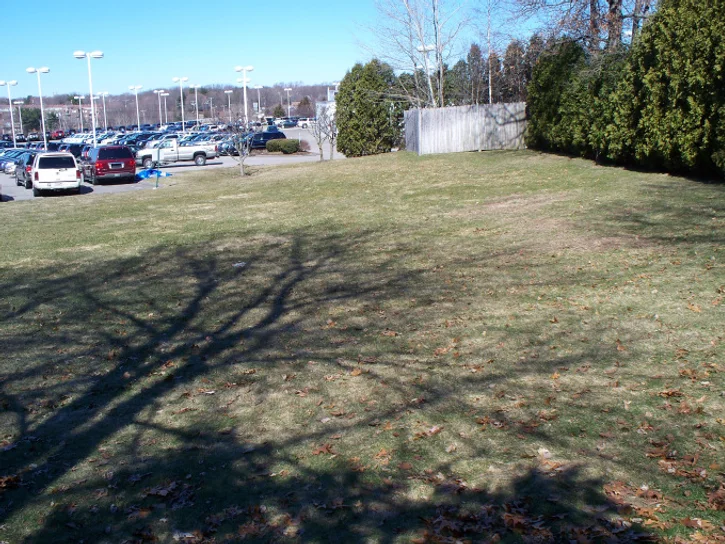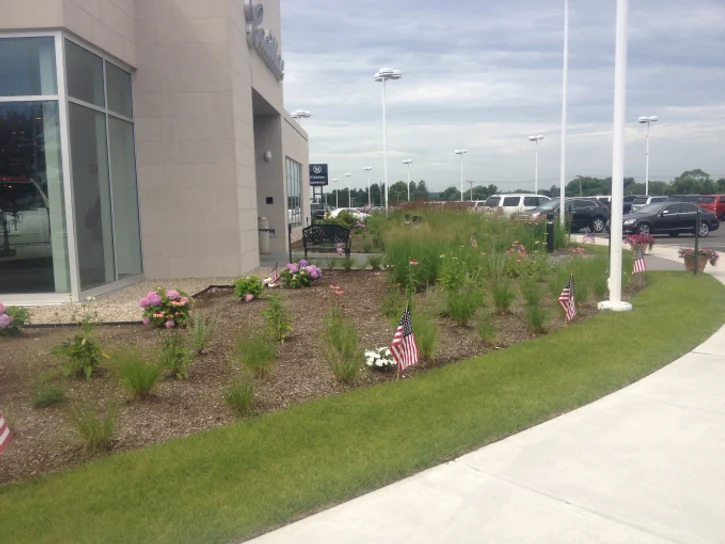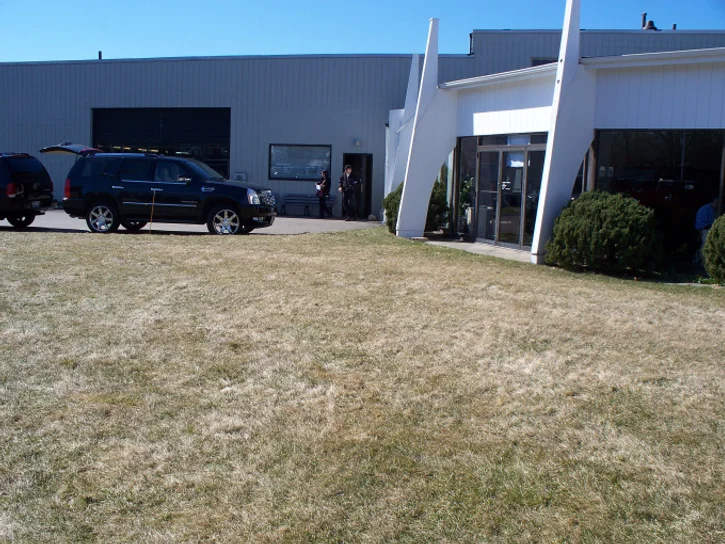As we are well aware of our State is in a deep drought situation and the water use restrictions imposed by our towns vary, but often include limitations on the hours of the day, the days per week, and there be limitations on automatic sprinklers or irrigation systems, or maybe a complete ban on outdoor watering! These water use restrictions help to preserve water for essential in-home uses such as water for drinking, washing, toilet flushing, as well for emergency needs such as firefighting. MassDEP also implements these restrictions to help ensure that there is enough water in our rivers, ponds and streams to support native wildlife and habitat. GroundscapesExpress, Inc. and their sister company Eastern Design & Landscape Contractors, Inc. two local landscape management companies that are located in Wrentham, MA. Have been preparing for these types of environmental emergencies for as long as they have been in business. Our initial action is to: “Build Healthy Soil!” 1) We introduce the Soil Food Web to every landscape development and landscape management project we work on. The Soil Food Web is a complex and bio – diverse community of micro – organisms that will form a relationship with the plant’s roots, the minerals in the soil, and the moisture (water movement) in the soils. The soil’s health will be directly related to the health of this microbial community. So then, how do we insure the health of this community? How does the health of the soil’s microbial community affect drought? These are what we will be speaking to in our daily Blog this week. 2. We work as hard as we possibly can to ensure that these little critters are as healthy as they can be! They are our best workers and they work 24 / 7 for no financial compensation? So these guys we want to be around for a while.We feed them with lots of proteins which are contained in selected food wastes, in green vegetation (grass, leaves and stems), which are derived from materials we remove from our landscape projects. We also feed them lots of carbon which is in the collection of autumn leaf-fall, tree limbs, branches and twigs, and chipped up tree components. We mix these raw materials together in the proportions that these organisms can use them it’s usually a 20:1 mix, to make a biologically active compost. We test the biological periodically and we can measure the active microorganisms that are living in our compost. We have developed products and practices that utilize these living organisms and apply them to our landscapes. We use them in building new topsoil. How does the health of the soil’s microbial community affect drought? The bacteria in the soil excrete enzymes that glue the tiny soil particles together. The fungi hyphae are threads that wrap up these glued soil particles into neat little bundles and create micro aggregates of soil. The mycorrhizal fungi travel deep into the subsoil and with the help of chemical eating bacteria, and the fungal excretion of liquid carbon create a polymer type material that forms within a soil aggregate and attracts other similar aggregates to form a macro – aggregate. These processes then create an open and porous soil structure that allows rainwater and scarce irrigation water to enter into the soil to make it available to plant roots. The walls of the spaces between these soil aggregates are covered with a moisture film where these organisms live. These aggregates allow the exchanges of waste gases produced by plants and carbon dioxide produced during respiration from these microorganisms to occur therefore, creating a healthy environment for a healthy soil food web. The mycorrhizal fungi consist of two tubular highways within their microscopic bodies. One highway takes in the excess liquid sugar produced, which is produced during photosynthesis as a source of energy and returns needed nutrients and WATER back up to the plant. This water is also stored underground in the millions of miles of mycelial threads and is available to the plants (lawn grass) in times of scarce rainfall. The polymer material (humic substances), that is produced by the mycorrhizae and the mineral solubilizing bacteria within the soil aggregate can hold twenty to forty times its weight in water. Therefore, acting as a subterranean water storage tank for the plant’s roots to access in times of drought. The effects of a healthy living soil microbial community and ecosystem protect soil from erosion, increase soil porosity, and increase the soil’s ability to capture, store, transport, and release the excess into the underground reservoir, the aquifer, and back into the rivers and ultimately back into the ocean where it will be cycled into precipitation thus completing the water cycle. 3. The next way that we are protecting against the effects of drought are; we strive to reduce the size of lawns that surround our homes. Lawn grasses are thirsty for water all during their growing season. The cool season grasses that make up our lush green lawns will go dormant in the summer and virtually appear to be no longer alive so that they can protect themselves from growing and needing water. Therefore, by reducing the size of our lawns we are improving the look of brown dry grass surrounding our homes in the summer. We replace our lawns with warm season native and non – native ornamental grasses, and flowering herbaceous perennial plants and native wildflowers and mulch them in with a light coating of composted wood mulch as a pre-biotic and a temporary habitat for the soil microorganisms and create the appearance of flowing meadows. These plantings besides adding movement, color and texture to the landscape, improve the soil structure and assist in retaining moisture in our soils. Because these plantings consist of natives or plants, which are selected because they can grow with our local environmental conditions (climate, soils, topography, etc.), are better able to withstand long periods of drought as well. These plants also are very deep rooted unlike the shallow cool season lawn grasses and their deep roots along with their mycorrhizal associations, enables them to access more of the soil moisture that lies deep within our subsoils away from the drying effects of wind and scalding sunshine. The canopies of these plants also protect the soils from the sun’s radiant heat and cools the soil surface. 4. The combination of improving the health of the soil, and planting a plant community of a wide diversity of species, which also increases the diversity of the soil microbial community. The roots of each plant create subterranean soil conditions of varying depth and moisture. The excess glucose left over from photosynthesis transitions into liquid polysaccharides (liquid carbon) as food for diverse species of microbes as well. This complex ecosystem (living landscape system), which we design and plan for will mitigate the effects of drought much better than woody perennial trees, shrubs and lawn grasses and add everlasting beauty to our landscapes.






